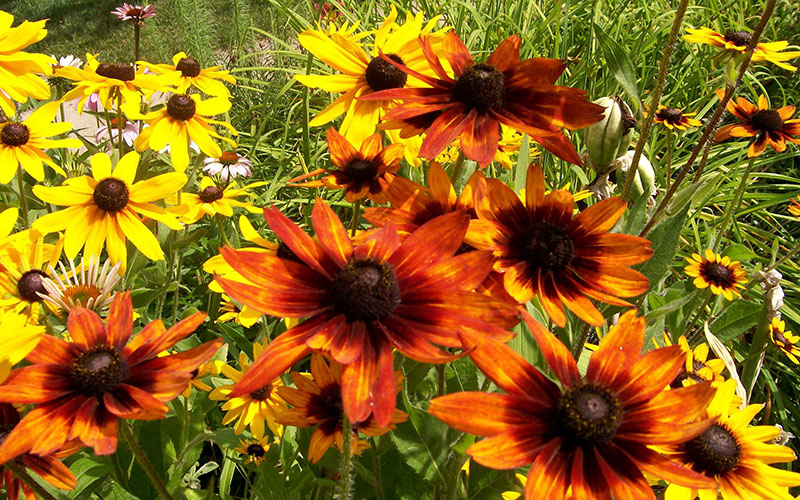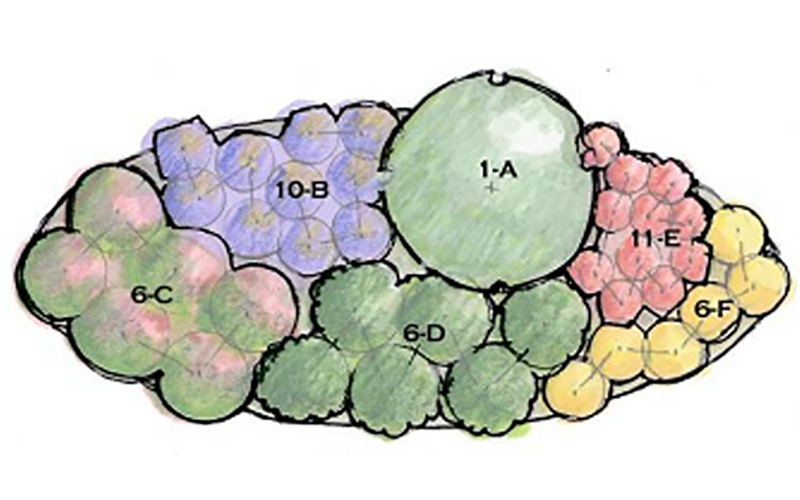Replace Lawns with Native Plants
About Replace Lawns with Native Plants
Native gardens are a sustainable and beautiful alternative to grass lawns. Maintaining grass lawns increases greenhouse gasses through the use of synthetic fertilizers and lawn equipment like gas-powered mowers and leaf blowers. Lawns also provide little habitat for birds and other wildlife, and runoff from chemically treated lawns can carry pesticides and fertilizers into local streams, rivers, and the Chesapeake Bay where they harm fish, crabs, and aquatic ecosystems.
Rockville property owners can help wildlife and take action on climate change by incorporating native plants, trees, and other habitat elements on their properties to improve habitat connectivity, create wildlife corridors, increase biodiversity, and build climate-resilient landscapes throughout the city.
Restoring your yard with native plants and trees will provide essential habitat for wildlife and reduce your carbon footprint. Native plants have adapted alongside local wildlife and often require fewer resources, use little to no fertilizer or pesticides, and absorb carbon to keep it out of the atmosphere. Replacing lawn area with native landscaping is also eligible for a RainScapes Rebate.



Creating a Neighbor-Friendly Garden
Native plant gardens come in many shapes, sizes, and styles, but they don’t have to look wild or messy. Try the tips below to let neighbors know your garden is intentional and read more about being an ambassador for native gardens in neighbor-friendly wildlife gardens.
- Talk with your neighbors about the environmental benefits of a native habitat garden and how it will attract birds and butterflies.
- Follow the “right plant, right place” rule of thumb. Choose plants that are well-suited to the light, soil, moisture, and use of a space to create a garden that thrives and is easy to maintain. Start with a small area or work in phases.
- Create a thoughtful design that will mesh with your neighborhood aesthetic. Add human touches and a few “cues to care” to your garden such as native habitat signs, defined edges, paths, benches, bird baths, sculptures, or arbors.
Tips on Buying Native Plants
Ask your local garden center if they carry native plants and find links above for local plant nurseries, native plant sales, and local growers. Some online vendors also sell native plants, but try to choose vendors that carry local ecotypes when possible. Do not dig plants from the wild. Many native species are threatened or endangered and will not transplant well.
Native Planting Without a Yard
Do you rent or live in an apartment, condo, or townhome? Here’s how you can help!
- Plant a native container garden for your patio or balcony.
- Plant natives in a community garden.
- Encourage your community organization to plant natives on common property.
- Partner with a local school to create a schoolyard habitat.
- Volunteer to help restore biodiversity in city parks with the Rockville Weed Warriors.
contact
Jump To
Contact
Public Works Department
Environmental Management Division
240-314-8870
environment@rockvillemd.gov
Hours
Monday – Friday
8:30 a.m. – 5 p.m.
